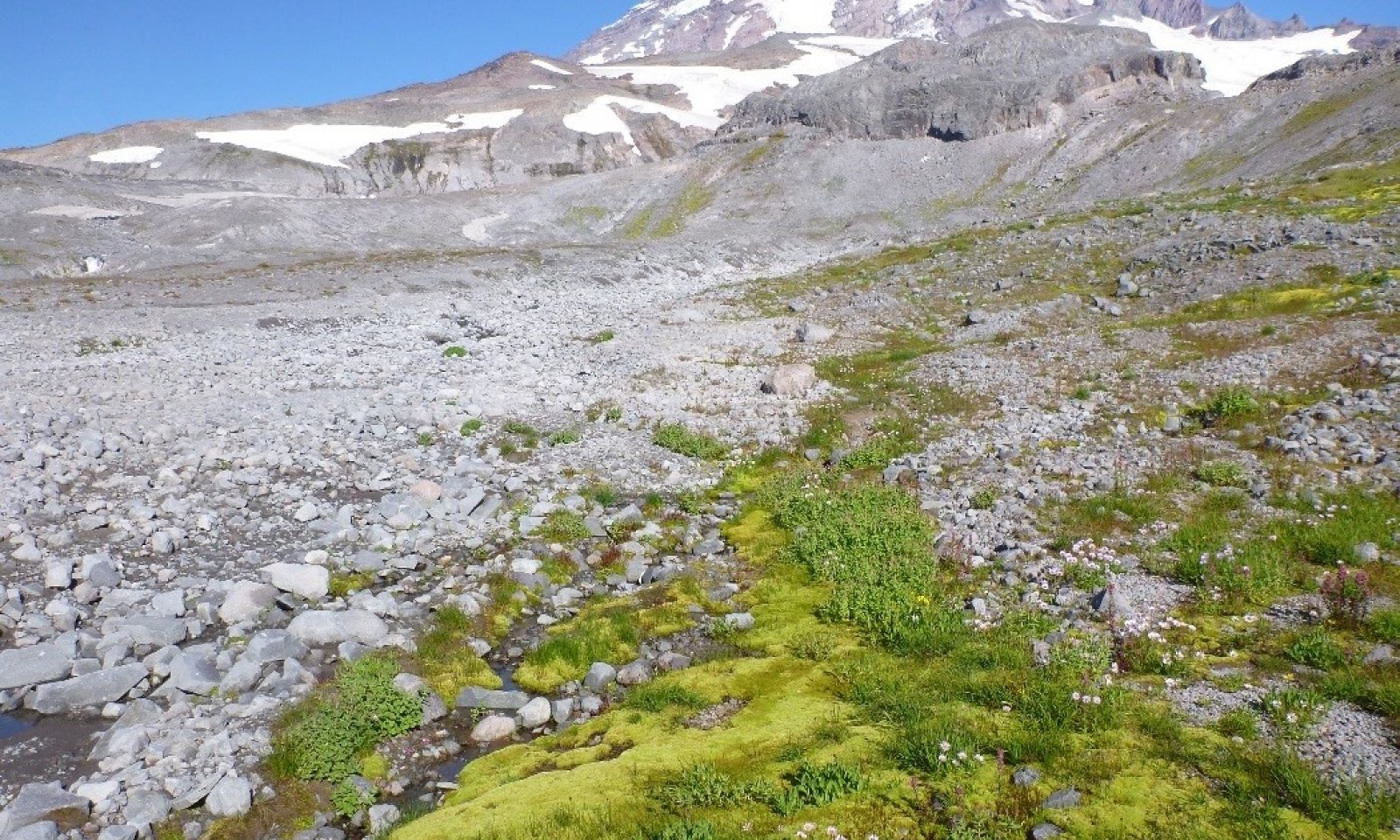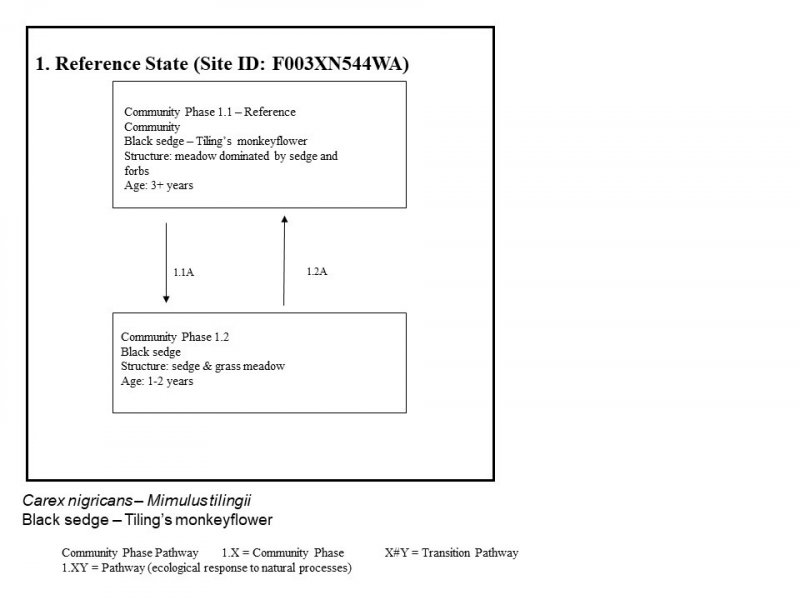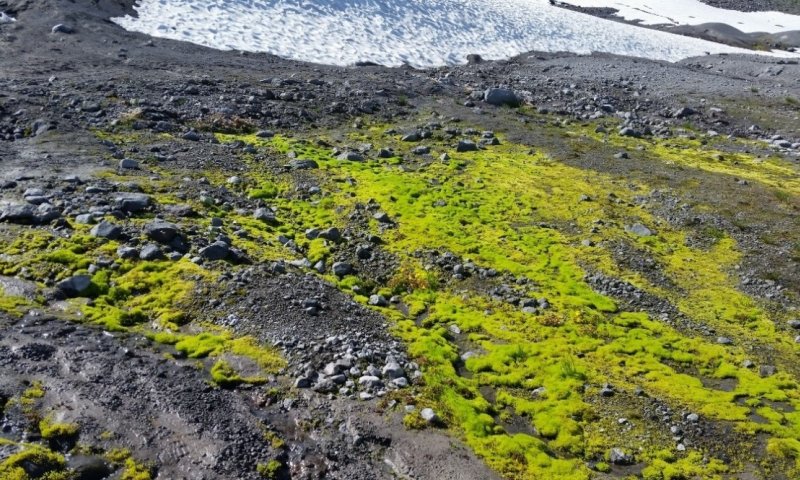

Natural Resources
Conservation Service
Ecological site R003XN544WA
Southern Washington Cascades Wet Alpine Tundra
Last updated: 1/29/2025
Accessed: 12/21/2025
General information
Provisional. A provisional ecological site description has undergone quality control and quality assurance review. It contains a working state and transition model and enough information to identify the ecological site.
MLRA notes
Major Land Resource Area (MLRA): 003X–Olympic and Cascade Mountains
Steep mountains and narrow to broad, gently sloping valleys characterize this MLRA. A triple junction of two oceanic plates and one continental plate is directly offshore from Puget Sound. Subduction of the oceanic plates under the westerly and northwesterly moving continental plate contributes to volcanic activity in the Cascade Mountains. Movement among these plates has resulted in major earthquakes and the formation of large stratovolcanoes. The Cascade Mountains consist primarily of volcanic crystalline rock and some associated metasedimentary rock. The mean annual precipitation is dominantly 60 to 100 inches, but it is 30 to 60 inches on the east side of the Cascade Mountains.
The soil orders in this MLRA are dominantly Andisols, Spodosols, and Inceptisols and minor areas of Entisols and Histosols. The soils are dominantly in the frigid or cryic temperature regime and the udic moisture regime. The soils generally are shallow to very deep, well drained, ashy to medial, and loamy or sandy. They are on mountain slopes and ridges.
Ecological site concept
This ecological site is at middle and high elevations on Mount Rainier in the Southern Washington Cascade Mountains. Elevation is 4,600 to 7,850 feet. The site is in swales of cirques and on glacial-valley floors at the upper limits of plant growth. The main abiotic factor affecting plant growth is the proximity to water and melting snow. Areas at the lower elevation range of this site typically are cooler than other areas at similar elevations due to factors such as proximity to permanent ice.
The soils that support this ecological site are in the cryic soil temperature regime and the aquic soil moisture regime. The climate is characterized by cool, dry summers and cold, wet winters. The soils typically are poorly drained and very deep, and they formed in volcanic ash and glacial till. The water table commonly is at or near the surface for much of the growing season. The soils are coarse textured and low in content of organic matter.
The seasonal snowpack melts later on this site than it does on most other ecological sites in Mount Rainier National Park. This influences the hydrology and growing season. The air and soil temperatures on this site are significantly cooler, resulting in a shorter growing season. The vegetation is patchy and limited to areas with sufficient soil moisture and available nutrients. Common plants include Tiling’s monkeyflower (Mimulus tilingii), arctic lupine (Lupinus arcticus), partridgefoot (Luetkea pectinata), and black alpine sedge (Carex nigricans).
Associated sites
| R003XN543WA |
Southern Washington Cascades Alpine Tundra Ecological sites R003XN544WA, Southern Washington Cascades Wet Alpine Tundra, and R003XN543WA, Southern Washington Cascades Alpine Tundra, have some similar climatic and physiological features. Ecological site R003XN544WA is at lower elevations that are slightly warmer and receive more precipitation as compared to site R003XN543WA. As a result of the increased moisture availability, site R003XN544WA supports a wider variety of vegetation species that have higher production as compared to site R003XN543WA. |
|---|
Similar sites
| R003XN540WA |
Southern Washington Cascades Wet Subalpine Parkland Ecological sites R003XN544WA, Southern Washington Cascades Wet Alpine Tundra, and R003XN540WA, Southern Washington Cascades Wet Subalpine Parkland are both heavily influenced by the amount and duration of annual snowpack. The main abiotic factor affecting plant growth in ecological site R003XN544WA is the proximity to water and melting snow. Common plants include Tiling’s monkeyflower , arctic lupine, partridgefoot, and black alpine sedge. Site R003XN544WA supports a wider variety of vegetation species that have higher production as compared to site R003XN540WA. |
|---|
Table 1. Dominant plant species
| Tree |
Not specified |
|---|---|
| Shrub |
Not specified |
| Herbaceous |
(1) Carex nigricans |
Click on box and path labels to scroll to the respective text.




